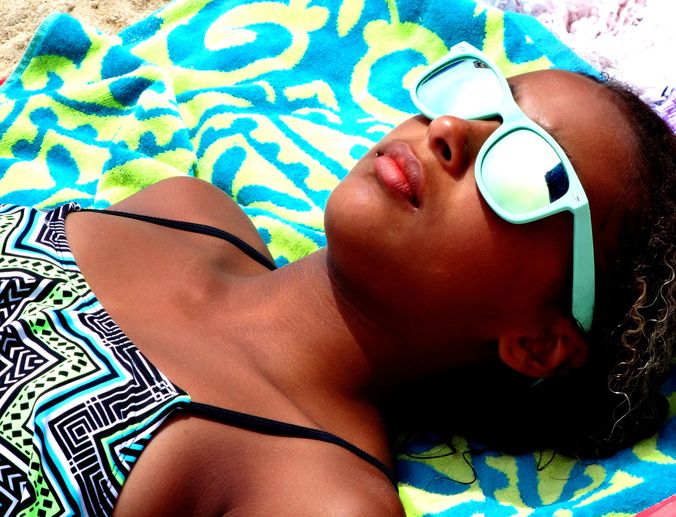Preventing skin cancer begins with protecting your skin from the sun’s rays. Practice sun safety with these steps:
- Avoid tanning (indoors and outdoors)
- Apply sunscreen daily 30 minutes before sun exposure, even on cloudy days
- Use a broad spectrum (UVA/UVB) sunscreen with an SPF of at least 30. Use a water-resistant formula and reapply every two hours and more frequently after swimming or sweating
- Seek shade during the sun’s most intense hours of 11 a.m. to 3 p.m.
- Cover up with protective clothing including a broad-brimmed hat
- Shade your eyes with sunglasses that filter UV rays
How to do a skin self-exam
By checking your skin regularly, you will become familiar with what is normal for you. It may be helpful to record the dates of your skin exams and to write notes about the way your skin looks. If you find anything unusual, see your doctor right away. If you have photos of your skin, comparing your skin to the photos can help you check for changes. If possible ask a family member to help you with skin checks.
The best time to do a skin self-exam is after a shower or bath. You should check your skin in a well-lighted room using a full-length mirror and a hand-held mirror. It’s best to begin by learning where your birthmarks, moles, and blemishes are and what they usually look and feel like.
Check your skin monthly for anything new:
- a mole (that looks abnormal)
- a change in the size, shape, color, or texture of a mole
- A sore that does not heal
- A growth that bleeds easily, itches all the time, or feels tender.
Check yourself from head to toe. Don’t forget to check all areas of the skin, including the back, the scalp, between the buttocks, and the genital area.
- Look at your face, neck, ears, and scalp. You may want to use a comb or a blow dryer to move your hair so that you can see better. You also may want to have a relative or friend check through your hair because this is difficult to do yourself.
- Look at the front and back of your body in the mirror, then raise your arms and look at your left and right sides.
- Bend your elbows and look carefully at your fingernails, palms, forearms (including the undersides), and upper arms.
- Examine the back, front, and sides of your legs. Also look between your buttocks and around your genital area.
- Sit and closely examine your feet, including the toenails, the soles, and the spaces between the toes.
